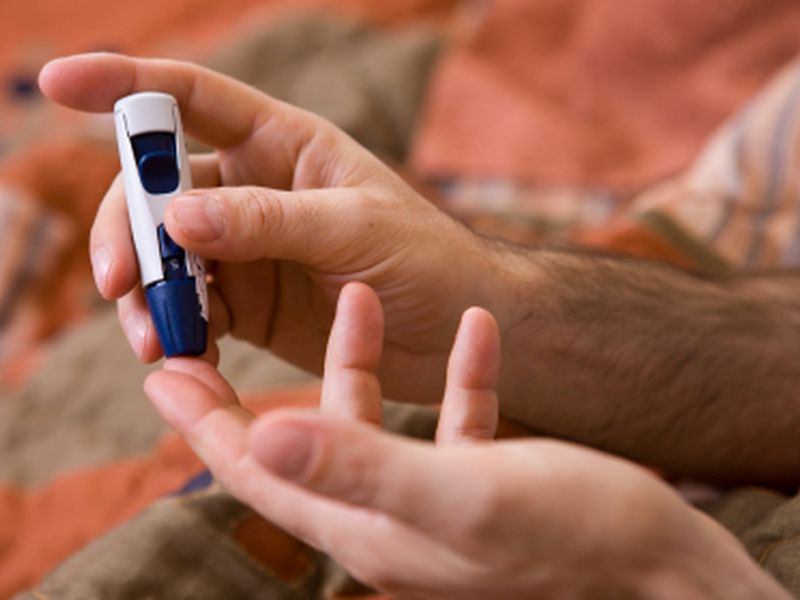
Scientists report a step forward in the plan to create a truly artificial pancreas, offering new hope to people with type 1 diabetes.
A 43-year-old single mother with dangerously difficult-to-control diabetes had insulin-producing islet cells transplanted into her omentum — a fatty membrane in the belly.
The cells began producing insulin faster than expected, and after one year she is doing well and doesn’t need insulin injections, the University of Miami researchers said.
“We’re exploring a way to optimize islet cell therapy to a larger population. This study gives us hope for a different transplant approach,” said the study’s lead author, Dr. David Baidal. He’s an assistant professor in the university’s Diabetes Research Institute.
Others voiced optimism as well. “This study was a good start at evaluating a novel site for transplant,” said Julia Greenstein, vice president of discovery research for JDRF (formerly the Juvenile Diabetes Research Foundation).
Type 1 diabetes is an autoimmune disease. That means the body’s immune system mistakenly damages healthy cells — in this case, the islet cells found in the pancreas. This leaves people with type 1 diabetes without enough insulin to convert sugars from foods into energy for the body.
As a result, they must take multiple daily insulin injections, or use a pump that delivers insulin via a tube inserted under the skin that must be changed every few days.
Currently, islet cells from deceased donors are transplanted into the liver, but that’s not an ideal option.
This new research was a proof-of-concept study expected to be the first step on a path toward developing a mini-organ called the BioHub.
In its final stages, the BioHub would mimic a pancreas and act as a home for transplanted islet cells, providing them with oxygen until they could establish their own blood supply.
The hope is that the BioHub also would attempt to tackle the autoimmune attack that causes type 1 diabetes.
But, the first step in developing the BioHub was to find a suitable location in the body. When the liver is used for islet cell transplants, only a limited amount of islet cells can be transplanted. There’s also a risk of bleeding when the transplant is done and the possibility of other complications, the researchers said.
“For most people, the liver isn’t a problem. It’s a great source of blood. It’s a good place for insulin to be made. But, there are rare complications that can occur and we want to be able to explant [take the cells out] in case something does happen,” said Greenstein, adding that you can’t take the cells out of the liver.
Also, with islet cell transplants in the liver, the underlying autoimmune condition is still there. And, if people didn’t take immune-suppressing medication, the new islet cells would likely be destroyed.
Because of these and other issues, islet cell transplantation is generally reserved for people whose diabetes is very difficult to control or who no longer have an awareness of potentially dangerous low blood-sugar levels (hypoglycemia unawareness).
The woman in the current study had a 25-year history of type 1 diabetes. She also had severe hypoglycemia unawareness.
“Her quality of life was severely impacted. She had to move in with her parents. And, if she traveled, she had to travel with her father” in case her blood sugar levels dropped dangerously low, Baidal explained.
The surgery was minimally invasive, and the islet cells were placed on a “scaffold” that eventually dissolved. There were no complications, the researchers said.
“We were happily surprised when her glucose [blood sugar] profile improved quite dramatically,” Baidal said.
Normally, after a transplant, doctors wait a while before stopping insulin to give the new islet cells a chance to rest. But the new islet cells worked so well that the injected insulin was causing low blood sugar levels.
“We were able to discontinue insulin sooner than we thought we would. And, the glucose control was very stable,” Baidal said.
Baidal said the study results need to be replicated in other patients, and the researchers want to see what happens post-treatment over a longer time. The researchers plan to test the omentum as a site in five more patients.
Greenstein said a big clinical trial isn’t necessary because “either the transplant works or it doesn’t work,” so only a small number of people is needed.
The study’s findings were published online May 10 in the New England Journal of Medicine.
More information
Learn more about islet cell transplants from the U.S. National Institute of Diabetes, Digestive and Kidney Diseases.
Source: HealthDay

Leave a Reply